Hello and welcome to the exciting world of silicone baking mats! As someone who’s both a silicone expert and a baking enthusiast, I’ve got loads to share about these handy kitchen helpers. Imagine me as your friendly guide, ready to take you on a journey through the land of easier, healthier, and more eco-friendly baking.
Now, you might be wondering, “What’s so special about these mats?” Well, let me tell you, they’re a game-changer. I’ve seen them work their magic in professional kitchens, and I use them all the time at home too. They’re like the secret ingredient to baking that not only makes it more fun but also a whole lot simpler.
In this guide, I’ll dive into everything that makes silicone baking mats a must-have in your kitchen. Whether you’re whipping up a batch of cookies, roasting veggies, or trying your hand at homemade bread, these mats can be your best friend. I’ll share real stories and tips from my kitchen – the good, the quirky, and everything in between.
So, are you ready to find out how these mats can turn your baking upside down (in the best way possible)? Let’s get started and turn those baking blues into baking woohoos!
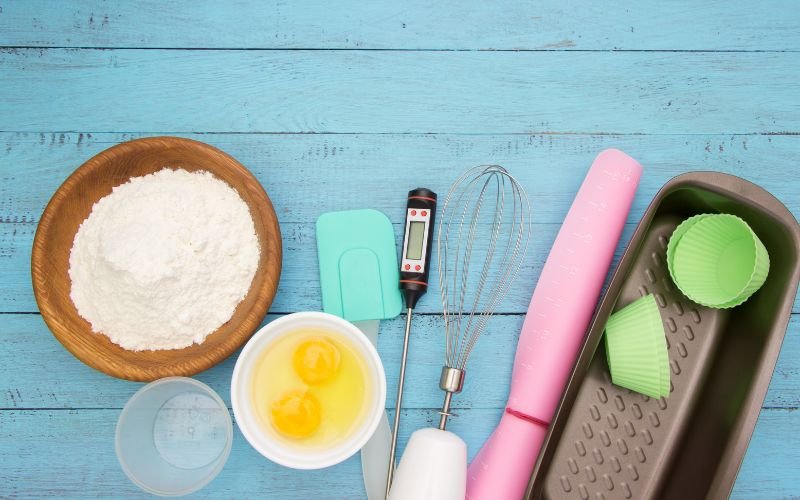
Understanding Silicone Baking Mats
What Are Silicone Baking Mats?
What exactly are silicone baking mats? Think of them as the super-cool, non-stick sidekick for your baking sheets. Made from high-quality silicone, these mats are designed to fit right onto your baking tray. And the best part? They’re reusable, which means you can say goodbye to single-use parchment paper or aluminum foil. It’s like giving your baking tray a non-stick, easy-to-clean outfit that you can use over and over again.
Silicone Baking Mat Material Composition and Design
Now, you might be wondering, “What’s so special about silicone?” Silicone is this amazing, rubber-like material that’s heat resistant, durable, and super flexible. It’s like the superhero of kitchen materials – it can withstand high temperatures (we’re talking oven-hot) without melting or getting damaged. Plus, it’s safe for food, which is a big thumbs-up for health-conscious bakers.
Variations in Silicone Baking Mats
Silicone baking mats aren’t a one-size-fits-all deal. They come in various sizes to fit different baking trays. You’ve got the small ones perfect for toasting nuts or baking a batch of cookies, and then there are larger ones for big tasks like roasting a whole chicken or making a giant pizza. And the variety doesn’t stop there – some have markings for rolling out pie dough or spacing cookies. It’s like having a little baking assistant printed right on the mat!
Resources:
Silicone Mat
Best Silicone Pastry Mat Baking
Perfectly Shaped Macarons Silicone Mat
Non-Stick Silicone Baking Mat
Mess-Free Silicone Mat for Crafting
How to Flatten Silicone Mat
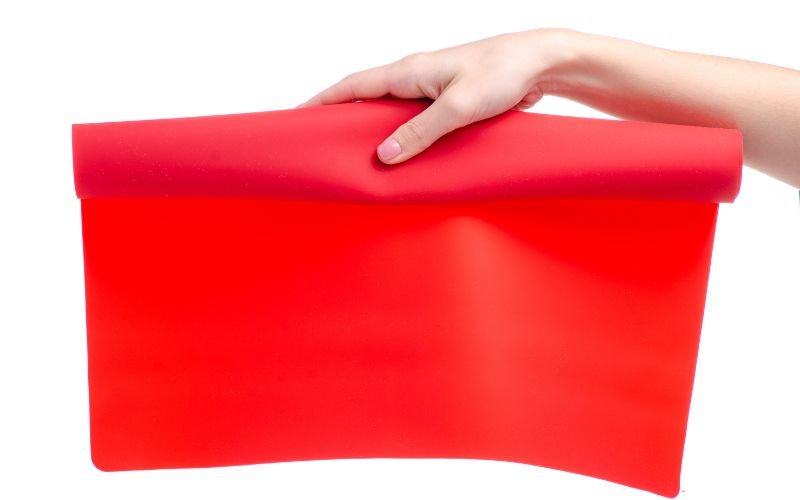
Safety and Health Aspects
Are Silicone Baking Mats Toxic?
One of the first questions that pops up in anyone’s mind is, “Are these silicone mats safe for me and my family?” The answer is a resounding yes! High-quality silicone baking mats are made from food-grade silicone, which means they’re free from nasty chemicals like BPA, lead, and phthalates. This kind of silicone doesn’t react with food or beverages, or produce any harmful fumes when heated. It’s the same kind of material used in baby bottle nipples and medical devices – that’s how safe it is!
Silicone Baking Mat Health Concerns and Benefits
Here’s another fantastic thing about silicone mats: they encourage healthier baking. Because of their non-stick nature, you often don’t need to use extra butter, oil, or non-stick sprays, which cuts down on unnecessary fats. This is great news for anyone looking to make healthier food choices. Plus, the even heat distribution helps in perfectly cooking your treats, making them not just healthier but tastier too.
Silicone Baking Mat Environmental Impact and Reusability
Let’s not forget the environmental angle. Silicone baking mats are reusable, which means fewer rolls of parchment paper and aluminum foil in your trash. By making the switch, you’re not just making your kitchen more efficient, you’re also doing a solid for the planet. It’s a small change, but when many of us make it, the impact can be huge!
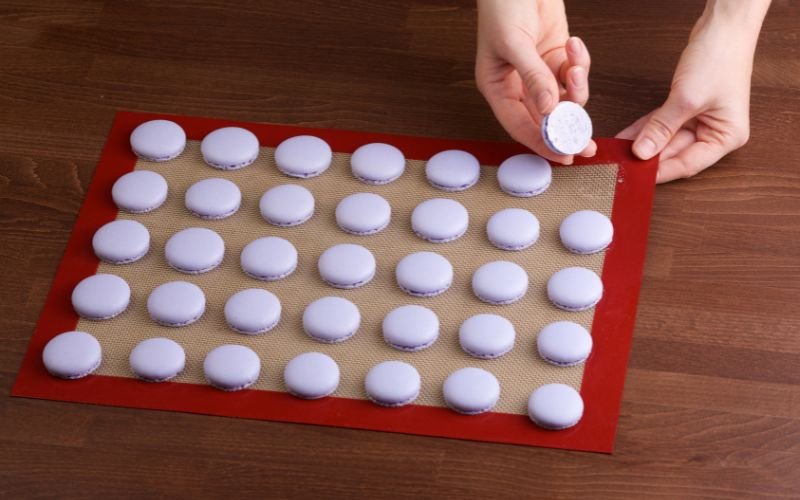
Using Silicone Baking Mats
How to Use a Silicone Baking Mat for Baking and Cooking
So, you’ve got your silicone baking mat – now what? First things first, let’s talk about the basics. These mats are designed to fit snugly onto your baking trays. Just lay them flat on the tray, and voilà, you’re ready to start. No greasing, no flouring – the non-stick surface has got you covered. Whether it’s cookies, pastries, or bread, just place your dough right on the mat. The heat-resistant silicone will ensure an even bake with a lovely bottom crust.
Can you cook meat on a silicone baking mat?
But wait, there’s more! Silicone baking mats are not just for sweets. You can roast vegetables, cook meat, and even make pizzas on them. The even heat distribution means everything cooks beautifully without burning or sticking. And here’s a pro tip: these mats are fantastic for candy making – think caramel and chocolate work – because the sticky stuff just peels right off!
Creative Uses: Rolling Dough and More
Do you struggle with rolling dough to the right size? Some silicone mats come with handy measurements and circles printed on them, making it easier to roll out pie crusts or pizza dough to the perfect size. They’re also great for messy projects with kids – think kneading dough or decorating cookies – because cleanup is a breeze.
Do you need to grease silicone baking mats?
This is a common question. The beauty of silicone baking mats is their non-stick nature, which usually eliminates the need for greasing. However, a light coat of oil or butter can be used for flavor purposes or when baking extremely sticky confections. Just remember, a little goes a long way!
Pay attention to Silicone Baking Mat Heat Limits
While silicone baking mats are super versatile, it’s essential to know their heat limits. Most mats can withstand temperatures up to 480°F (250°C), but it’s always good to check the manufacturer’s instructions. And remember, they’re not suitable for direct flame or stovetop use – oven only!
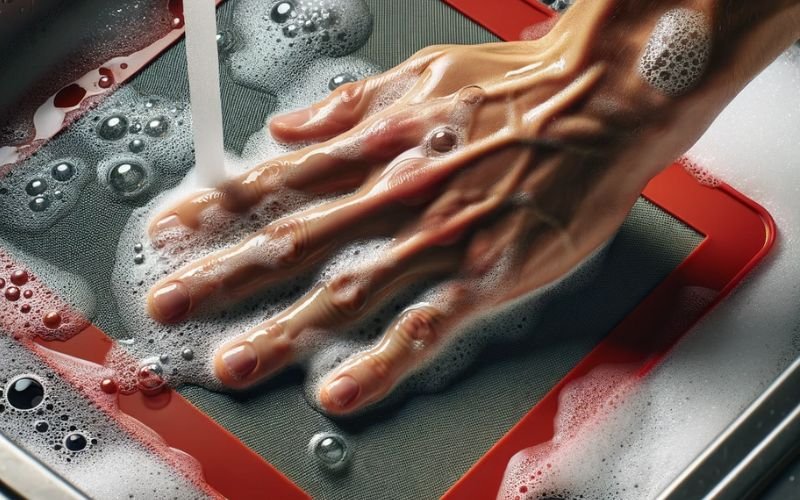
Care and Maintenance
How to Clean Silicone Baking Mat?
One of the best things about silicone baking mats is how easy they are to clean. After baking, let the mat cool down, and then just wash it with some warm, soapy water. You can do this by hand or place it on the top rack of your dishwasher. However, for those extra sticky situations (like caramel or melted cheese), soaking the mat for a bit before washing can make a world of difference.
Tackling Tough Stains and Odors
Occasionally, you might encounter stubborn stains or odors. Don’t fret! A mixture of baking soda and water can work wonders. Just make a paste, spread it over the mat, let it sit for a few hours, and then wash as usual. This simple trick can help keep your mats looking and smelling fresh.
Can silicone baking mats go in the dishwasher?
Yes, but with Care.
One of the great features of silicone baking mats is that they are generally dishwasher safe. This makes cleanup a breeze. However, to preserve their lifespan, it’s best to place them on the top rack and avoid high-temperature settings or heated dry cycles that could warp or damage the mat.
How to store silicone baking mats?
When it comes to storing your silicone baking mats, the key is to avoid creasing or cutting them. You can either roll them up or lay them flat in a drawer. If space is tight, you can even store them in between baking sheets. This not only saves space but also keeps them handy for your next baking session.
Resources:

Compatibility and Suitability
Can you put silicone baking mats directly in the oven?
Silicone baking mats are designed for the oven, making them a fantastic tool for all your baking needs. However, it’s crucial to check the specific temperature limits for your mat. Most can typically handle up to 480°F (250°C), perfect for most baking and roasting tasks. But remember, they’re not invincible – keeping an eye on the temperature will ensure your mat’s longevity and safety.
Are silicone baking mats microwave safe?
Yes, you can use silicone baking mats in the microwave! They’re safe and won’t leach chemicals into your food, thanks to their stable, food-grade composition. This adds another layer of versatility, whether you’re melting chocolate or reheating pastries.
Freezer-Friendly for Advance Prep
Another fantastic aspect of silicone baking mats is their freezer compatibility. You can prepare dough or other ingredients on the mat and pop it straight into the freezer. The flexibility of silicone ensures that the mat won’t crack or deteriorate, even in extreme cold.
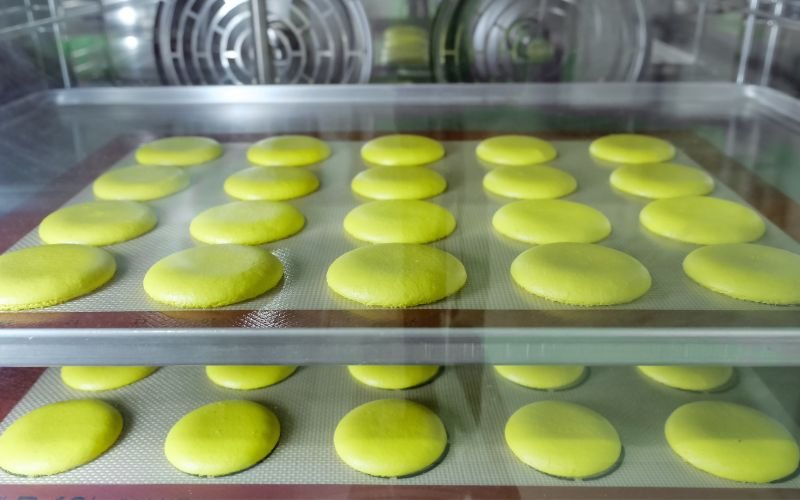
Durability and Adaptability
How long do silicone baking mats last?
Silicone baking mats are champions when it comes to durability. These mats are designed to withstand repeated use, making them a long-lasting addition to your kitchen. Unlike parchment paper or foil that tear or wear out, a good quality silicone mat can last for years. They resist tearing, warping, and staining, standing up to frequent baking sessions and cleaning cycles.
Adaptability: More Than Just Baking
The adaptability of silicone baking mats extends beyond just baking cookies or roasting veggies. You can use them for anything from freezing ingredients to rolling out dough, and even as a non-stick surface for candy making. Their heat-resistant and flexible nature makes them perfect for a variety of kitchen tasks.
Can you cut silicone baking mats?
A common question is whether you can cut silicone baking mats to fit different pan sizes. It’s generally not recommended to cut these mats, as it can compromise their structure and functionality. However, with the variety of sizes available on the market, finding one to fit your specific pan shouldn’t be a problem.
Handling Extreme Temperatures
One of the key features of silicone baking mats is their ability to handle a range of temperatures. They perform excellently in both high heat (like in ovens) and extreme cold (like in freezers). This flexibility allows for a range of culinary applications, from baking to freezing dough.
Comparative Analysis
Silicone Baking Mats vs. Parchment Paper
A common question is how silicone baking mats compare to traditional parchment paper. While parchment paper is a go-to for many bakers, silicone mats offer several advantages. They’re reusable, which means less waste and more savings in the long run. In terms of performance, silicone mats provide a consistent non-stick surface and distribute heat more evenly, resulting in perfectly baked goods every time. However, for certain applications like wrapping food or lining a pan for a water bath, parchment paper might still be your best bet.
Resource:
Parchment Pater VS. Silicone Mats for air fryer
Silicone Mats and Aluminum Foil: The Eco-friendly Choice
When compared to aluminum foil, silicone baking mats are the clear winner in terms of environmental friendliness. Unlike foil, which is often used once and then discarded, silicone mats can be used thousands of times. Plus, they don’t react with acidic foods like tomatoes or citrus, as aluminum sometimes can, ensuring that your food is not only delicious but also free from any metallic taste.
The Cost Factor: An Investment that Pays Off
Initially, silicone baking mats may seem more expensive than parchment paper or foil, but they are an investment that pays off over time. Considering their durability and the number of uses you get from a single mat, they are more cost-effective in the long run. This makes them not only an environmentally friendly choice but also a smart one for your wallet.
Performance in Baking: Consistency is Key
When it comes to performance in baking, silicone mats provide consistent results. Their non-stick surface means you can use less oil or butter, which is great for those looking to bake healthier. Additionally, the even heat distribution reduces the chances of burnt or unevenly cooked baked goods, a common issue with parchment paper or foil.

FAQs and Common Concerns
Q1: Can I Put Silicone Baking Mats in a Hot Oven?
A: Absolutely! Silicone baking mats are designed to withstand high oven temperatures, usually up to 480°F (250°C). However, it’s always a good idea to check the manufacturer’s specifications for the exact temperature range.
Q2: Are Silicone Baking Mats Suitable for All Types of Ovens?
A: Yes, they are suitable for most ovens, including conventional and convection ovens. Just avoid using them under a broiler or on direct heat sources like stove tops.
Q3: Is It Safe to Cut Food on a Silicone Baking Mat?
A: It’s not recommended to use knives or sharp objects directly on the mat, as they can damage the surface. For cutting, transfer your baked goods to a cutting board.
Q4: Can Silicone Mats Affect the Taste or Color of My Baked Goods?
A: High-quality, food-grade silicone mats should not affect the taste or color of your food. If you notice any changes, it might be due to overheating or a low-quality mat.
Q5: Can I Use Silicone Baking Mats for Freezing Food?
A: Yes! Silicone baking mats are freezer-safe and great for preparing and freezing dough or other ingredients.
Q6: Do I Need to Preheat the Oven When Using a Silicone Baking Mat?
A: Preheating the oven is always a good practice for even baking, regardless of whether you’re using a silicone baking mat or not.
Conclusion
As we wrap up this comprehensive guide on silicone baking mats, it’s clear that these versatile kitchen tools are more than just a fad; they’re a revolution in the baking world. From their eco-friendly and cost-effective nature to their wide range of uses and ease of maintenance, silicone baking mats offer benefits that go far beyond traditional baking methods.
Silicone baking mats are a must-have tool for every baker. They are safe, versatile, easy to use, and maintain. With the insights and tips shared in this guide, you’re well on your way to making the most out of these fantastic kitchen tools.